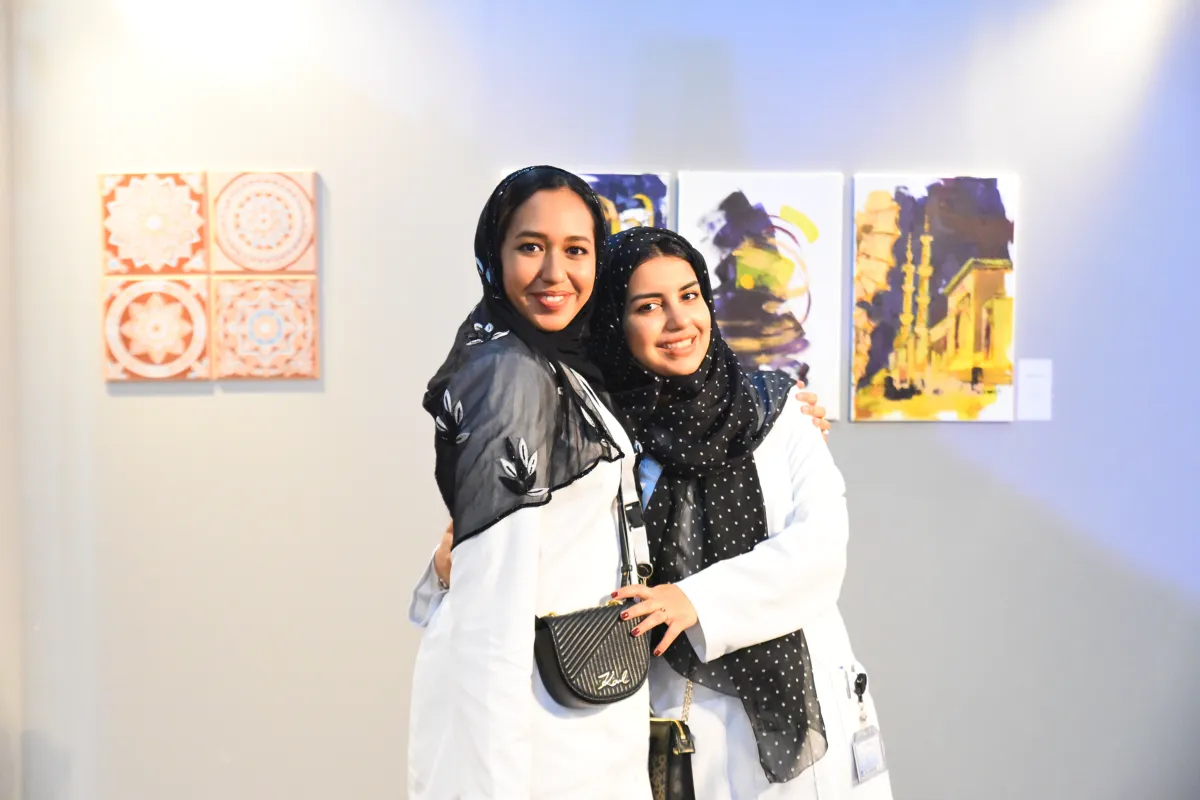
Saudi Arabia is undergoing a cultural transformation, recognizing the powerful role art can play in improving mental health and fostering community connections. By merging creativity with social impact, the Kingdom is embracing innovative initiatives that address societal challenges, empower individuals, and nurture a sense of belonging. From art therapy clinics to public art projects, these initiatives exemplify how art is becoming a catalyst for change.
1. Sahira Nahari: Art as a Tool for Healing
Sahira Nahari is a trailblazer in using art to promote mental well-being and strengthen community ties. Through her workshops and public art projects, Sahira creates safe spaces where participants can explore their emotions, engage in mindfulness, and express their stories through creative outlets. Her culturally resonant approach integrates traditional Saudi art forms with modern therapeutic practices, fostering empathy and mutual understanding within communities.
Explore more of Sahira’s impactful work on her platform: SahiraNahari.com.
2. The Jameel Arts & Health Lab: Global Collaboration for Local Impact
A standout initiative in this domain is the Jameel Arts & Health Lab, a global effort co-founded by the World Health Organization, New York University, and Community Jameel. The lab focuses on scientific research into the healing power of art, with special emphasis on underserved communities.
One of its flagship programs, Healing Arts Arabia, held events in Riyadh and Jeddah to spotlight art’s role in mental, physical, and social health. These events included panel discussions, exhibitions, and roundtables with the Saudi Ministry of Health, showcasing the intersection of art, health, and sustainability.
Learn more: Jameel Arts & Health Lab.
3. Art Therapy Clinics: A Government-Backed Initiative
In a groundbreaking move, the Saudi Ministry of Health is establishing art therapy clinics across the Kingdom starting in 2024. These clinics will integrate art as a therapeutic tool for psychological illnesses, providing individuals and families with creative ways to express their emotions and improve their mental health.
This initiative demonstrates Saudi Arabia’s commitment to destigmatizing mental health and ensuring accessible care for all.
4. Riyadh Art: Transforming the Urban Landscape
Riyadh Art, a key component of Saudi Vision 2030, is turning the capital into a vibrant, creative metropolis. By integrating public art installations and cultural programs throughout the city, Riyadh Art enriches lives, encourages creative expression, and boosts the creative economy. This ambitious project not only beautifies public spaces but also fosters a sense of community pride and well-being.
5. Revitalizing Jeddah’s Al-Balad District
Jeddah’s historic Al-Balad district is experiencing a cultural renaissance thanks to grassroots initiatives by local artists. Organizations like Zawiya 97, founded by artist Ahmad Angawi, are transforming the district into a hub of creativity. These efforts preserve traditional crafts while fostering new artistic expressions, creating a space where community members can connect and heal through art.
The Broader Impact on Saudi Society
These initiatives reflect a growing recognition of the arts as a vital tool for social and personal transformation. Programs like Sahira Nahari’s workshops, Riyadh Art’s public installations, and the establishment of art therapy clinics align with Saudi Vision 2030’s goals to enhance quality of life and build vibrant communities.
By prioritizing creativity and mental health, Saudi Arabia is nurturing a more inclusive and compassionate society. Art is no longer just a form of expression but a bridge to healing and a beacon of hope for communities across the Kingdom.
Saudi Arabia’s embrace of art as a medium for mental health and community building is a testament to its forward-thinking vision. These initiatives highlight how creativity can inspire resilience, foster unity, and contribute to a brighter future for all. As the Kingdom continues to invest in art-driven programs, it sets a powerful example for the world on the transformative potential of art.

